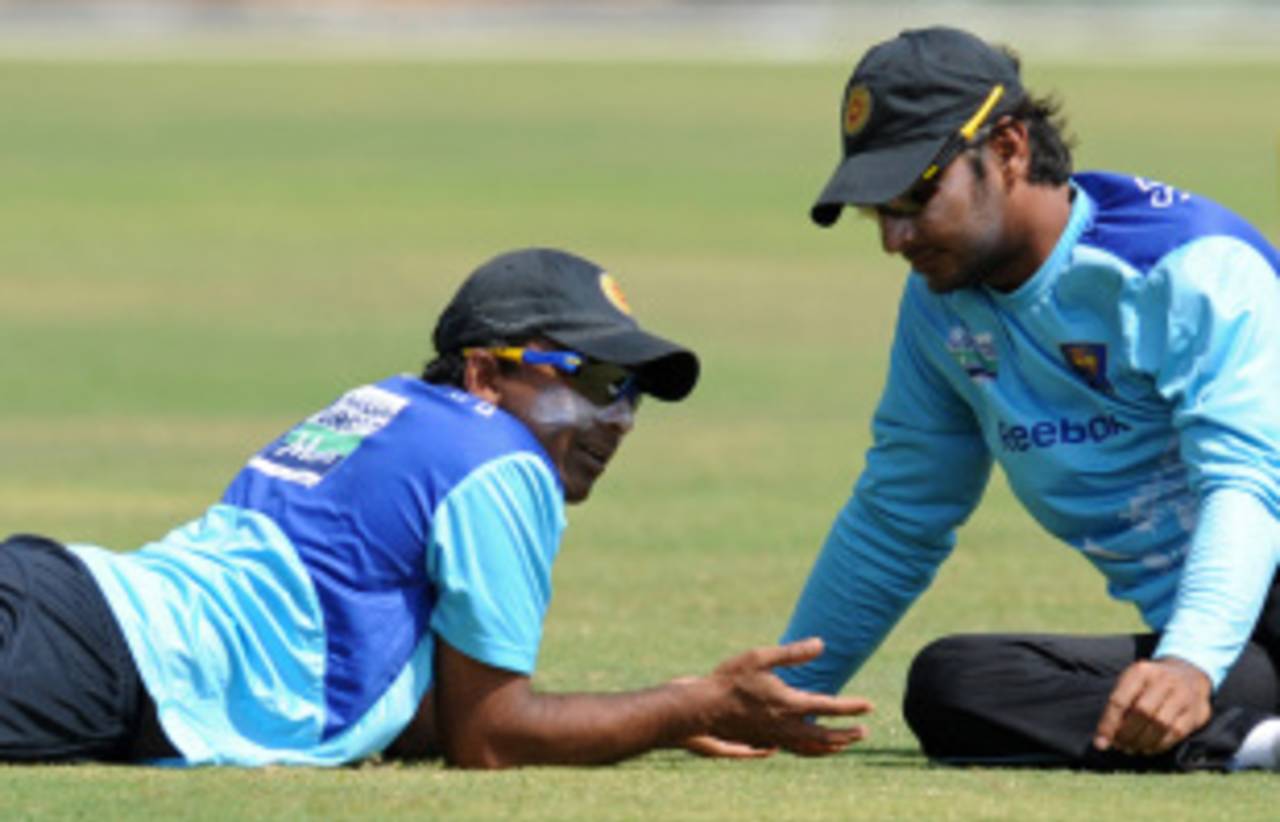In little over a month, Sri Lanka will host the World Twenty20. It has been 30 years since the island's inaugural Test. Neither Twenty20 cricket nor Sri Lanka as a host of a world event seemed a prospect in 1982.
Most of the current players were not born then. They should heed the lessons of the tragic hero of that match -
Ajit de Silva.
Ajit de Silva was one of the finest left-arm spinners that Sri Lanka has ever produced. He had nagging accuracy, biting turn and a lovely loop. Standing over six feet, he could extract bounce from the tamest of tracks.
De Silva was a master of drift, a quality that made him a formidable customer irrespective of the surface. His deliveries used to hiss in their flight. They were like grenades once they pitched. Only Erapalli Prasanna, among Ajit's contemporaries had that ability among finger spinners.
Ajit de Silva's first class statistics are solid but unremarkable. He took 161 wickets at 27 a piece in 53 matches. A ten-wicket haul eluded him.
But, the figures are misleading. His appearances were infrequent. Sri Lanka's club cricket was not recognized as first-class. The statistics do not record his dominance. Club cricket was more intense in the 1970s and 80s than today. There were only a dozen clubs, which is half of today's number.
World-class batsmen like Duleep Mendis, Roy Dias and Anura Tennekoon were in their prime. National players had no option but to play club cricket. Today, our national cricketers rarely play domestic cricket. Ajit de Silva was the leading bowler during the heydays of club cricket.
In a club match for Bloomfield against SSC, Ajit de Silva took nine wickets in an innings. The tenth victim was run out. It is no wonder that Arjuna Ranatunga once rated Ajit de Silva second only to Muttiah Muralitharan.
The highlights of his career were the unofficial Test matches that Sri Lanka used to play in the pre-Test era. He dismissed the Indian maestro Gundappa Viswanath seven times in eight innings. In 1981, he took 9 for 100 in an unofficial 'Test' in Colombo against Kim Hughes. This paved the way for the Sri Lanka's elevation to Test cricket.
The
inaugural Test match was played on a dusty track at the P Sara Stadium in Colombo. As the leading spinner, he held the fate of the match in his hands. In the first innings, he toiled for 30 overs taking 2 for 52. Greater deeds were expected in the second innings, as England had to bat last.
However, Sri Lanka's batsman were brilliant, but brittle. A classy 77 by Roy Dias was followed by a shocking collapse. John Emburey used his height to skittle out the Sri Lankans on the fourth morning. Seven wickets fell for eight runs amounting to a procession of batsmen. The match ended with a seven-wicket win for the visitors within four days.
Ajit de Silva played three more Tests with limited success. His powers were in decline at precisely the wrong moment, as he began to drink heavily. His strength and stamina suffered.
In October 1982, the lure of riches ended his international career. Ajit de Silva joined the rebel tour to South Africa led by Bandula Warnapura.
South Africa was in the grip of apartheid. Coloureds were accorded third-class status. This pariah state was in desperate need of international cricket.
The Sri Lankan rebels shamed the country. They were the first coloured team to tour South Africa. Ajit de Silva was the main draw in this ramshackle bunch of club cricketers. Some of the players were on the fringes of national selection like Bernard Perera. Perhaps, they were embittered by the lack of opportunities. Others were minor players in club cricket like Flavian Aponso and Lantra Fernando.
Ajit de Silva's betrayal had karmic consequences. On the South Africa tour, his extravagant turn deserted him. He could not even land the ball. Jimmy Cook, a heavy scorer in county cricket, was initially wary of him. Reports of de Silva's prowess had reached him. But de Silva could not live up to his reputation. He was ravaged and went wicketless in the two 'Tests', conceding over 7 runs an over.
Fittingly, the tour was a disaster both financially and in cricketing terms. The Weekend Post, a South African newspaper, reported that "Unfortunately, due to their [Sri Lanka] disappointing performances on the field, the crowd attendance was poor". "..Their real weakness was their bowling".
The Sri Lankan rebels lost both 'Test' matches by an innings, as well as all four one-day matches. Even the side matches against South African domestic teams such as Natal and Transvaal ended in innings defeat. The pace of the South African bowlers and the professionalism of their batting was overwhelming. The vast South African grounds were simply too large for the hapless visiting fielders.
Ajit de Silva was banned from all forms of cricket for 25 years. He dabbled in politics, but remains a forgotten figure.
His fall from grace has lessons for our current players. The pot of gold that Ajit de Silva coveted was not sustainable.
In 2008, Mahela Jayawardene's team
lobbied for a tour to England to be scrapped in favour of the IPL. Cricketers became agitators. But like the South African rebel tours, the IPL has not been a limitless pot of gold. It has not always been advantageous from a cricketing point of view. For example, in part, due to the IPL, Lasith Malinga, was recently taken to the cleaners by India, his once-feared yorkers proving ineffective against them.
There is only one way for the present players to avoid Ajit de Silva's fate: they must give Sri Lanka their full priority.
